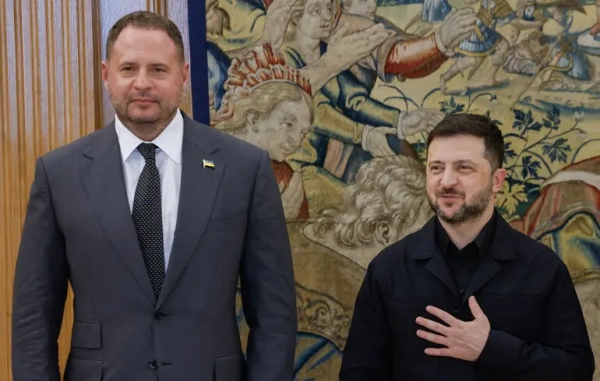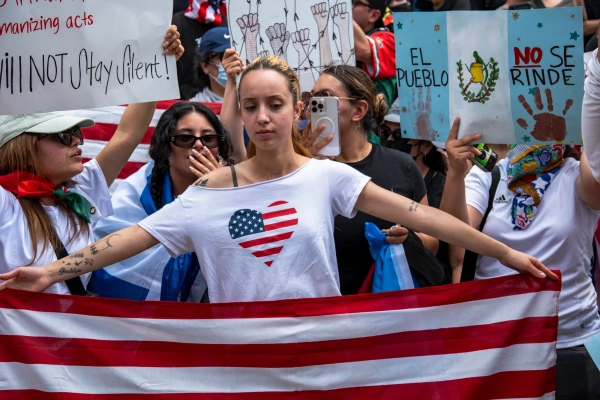
Three years after the Trump administration started separating immigrant families arriving on the southern border, lawyers say they still haven’t been able to reach the parents of 545 affected children, according to court documents filed Tuesday night.
Some of the children involved may never see their parents again. Lawyers for the American Civil Liberties Union said that they still cannot find the parents of 283 children despite thorough on-the-ground searches, and don’t expect to be able to reach them by telephone, meaning that the families may never be reunited.
Many of the families involved were separated in 2017, before the Trump administration began separating immigrant families routinely, hoping to deter immigrants from crossing the border without authorization.
The children have been released to sponsors, who are typically family members or friends, but also include foster families. Their parents, two-thirds of whom were deported before a federal judge ordered that they be identified and reunited with their children in 2018, either have not been located or have not been successfully contacted.
The group Justice in Motion is continuing to work to locate the parents in Mexico and Central America, though that has become more difficult amid the pandemic.
“While we have already located many deported parents, there are hundreds more who we are still trying to reach,” the group said in a statement. “It’s an arduous and time-consuming process on a good day.”
The news underscores the devastating long-term effects of the Trump administration’s policy. But even in cases in which lawyers expect to be able to find the parents eventually, families may never fully recover from the long-term psychological harm.
The US government had a policy of separating families — despite officials’ denials
Beginning in mid-2017, the federal government ran a pilot program in El Paso, Texas, under which it began filing criminal charges against anyone who crossed the border without authorization, including parents with minor children — even though many of them intended to seek asylum in the US, which is legal.
Parents were sent to immigration detention to await deportation proceedings. Their children, meanwhile, were sent to separate facilities operated by Department of Health and Human Services’ Office of Refugee Resettlement and, in some cases, released to other family members in the US or to foster homes. (Previous administrations, in most cases, would have simply released the families from detention.)
The Trump administration formalized the policy in May 2018, which it dubbed the “zero tolerance policy.” At least 5,000 families were separated before a California federal court ordered the federal government in June 2018 to reunify the families affected and end the policy.
The federal government, however, neglected to link the children to their parents in its databases, making the reunification process difficult, especially in the hundreds of cases of children who were under the age of 5, including one who was just 4 months old.
Unlike the Trump administration, the Obama administration did not have a policy of separating families, but it did try to detain families together on a wide scale and deport them as quickly as possible during the 2014 migrant crisis. Cecilia Muñoz, director of the Obama administration’s Domestic Policy Council, told the New York Times in 2018 that the administration had briefly considered pursuing family separations but quickly dropped the idea.
“We spent five minutes thinking it through and concluded that it was a bad idea,” she told the Times. “The morality of it was clear — that’s not who we are.”
Senior Trump administration officials, including former Homeland Security Secretary Kirstjen Nielsen, have repeatedly denied that they pursued a policy of family separation. Nielsen told Congress in December 2018 that the administration “never had a policy for family separation.” It was later revealed that she had, in fact, signed a memo greenlighting the practice, which clearly stated that DHS could “permissibly direct the separation of parents or legal guardians and minors held in immigration detention so that the parent or legal guardian can be prosecuted.”
Amid the Covid-19 pandemic, the administration has tried to carry out what immigrant advocates call a new kind of family separation. It pressured parents already detained within the US to voluntarily separate from their children by presenting them with what the administration has called a “binary choice”: Either allow their children to be placed with relatives or a foster family in the US while the parents remain detained, or stay together as a family in indefinite detention and risk contracting the coronavirus.
Family separations carry a long-term cost
The US government has long known the psychological harms associated with separating family members. These harms would only add to the anxiety created by the pandemic as immigrants and their children fight for their release from detention.
Commander Jonathan White, who previously oversaw the government’s program providing care to unaccompanied immigrant children, told Congress that, beginning in February 2017, he had repeatedly warned the officials who concocted the policy that it would likely cause “significant potential for traumatic psychological injury to the child.”
A September 2019 government watchdog report confirmed those effects, finding that immigrant children who entered government custody in 2018 frequently experienced “intense trauma” and those who were “unexpectedly separated from a parent” even more so.
Each child reacts to family separation differently. But psychologists have observed three main kinds of effects: disruptions to their social attachments, increases in their emotional vulnerability, and, in some cases, post-traumatic stress disorder, Lauren Fasig Caldwell, director of the American Psychological Association’s children, youth, and families office, said.
Those symptoms could be short-term or they could persist; they could also not even manifest until a child enters their teen years or adulthood. Any of them could significantly hinder a child’s later success in academics and in the workplace.
Parents who were separated from their children have experienced their own trauma — which may manifest in symptoms similar to those that researchers observe in children — and may not have the mental and emotional capacity to be able to provide what their children need.
Help keep Vox free for all
Millions turn to Vox each month to understand what’s happening in the news, from the coronavirus crisis to a racial reckoning to what is, quite possibly, the most consequential presidential election of our lifetimes. Our mission has never been more vital than it is in this moment: to empower you through understanding. But our distinctive brand of explanatory journalism takes resources. Even when the economy and the news advertising market recovers, your support will be a critical part of sustaining our resource-intensive work. If you have already contributed, thank you. If you haven’t, please consider helping everyone make sense of an increasingly chaotic world: Contribute today from as little as $3.
Sourse: vox.com






